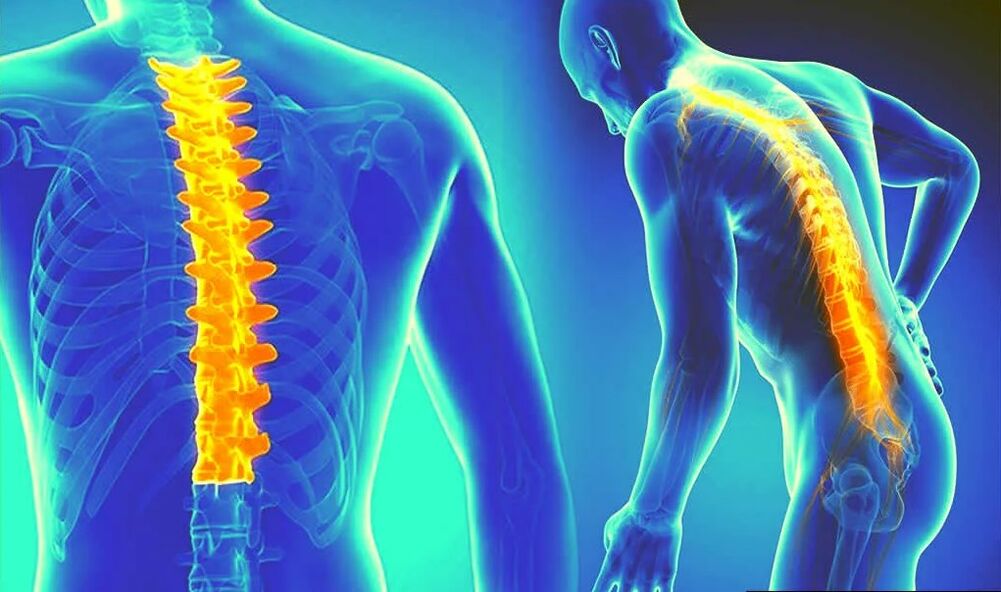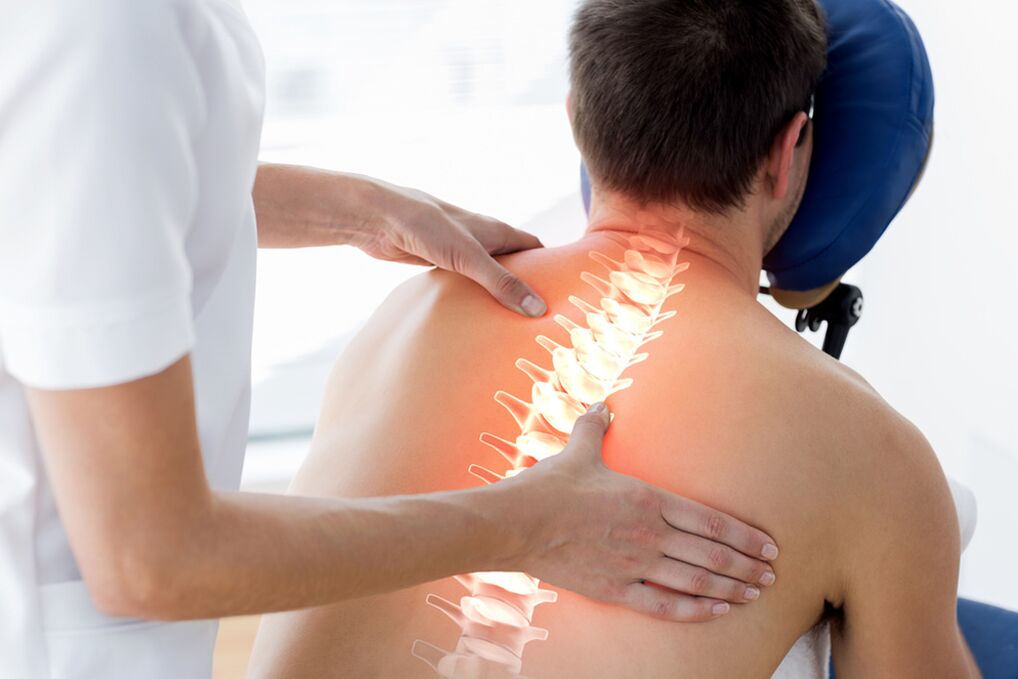Osteochondrosis is called pathological processes in the cartilage of the intervertebral discs and nearby tissues. The disease can occur on any part of the spine, however, the cervical spine is more susceptible to osteochondrosis. This is due to the anatomical features of the body. The vertebrae of the neck are smaller than those of the thoracic and lumbar regions and are very close to each other. In addition, the neck is characterized by increased mobility and undergoes regular stress while holding the head.

Why does the disease appear
The development of the disease is mainly associated with age-related changes. Other reasons are noted:
- lack of physical activity;
- diseases of the spine;
- excessive overload;
- incorrect posture;
- unfavorable inheritance;
- weight gain;
- autoimmune diseases in which the cartilage is damaged.
The condition of the bone and cartilage tissue is seriously impaired by nutrition. The development of pathology is facilitated by a diet with a deficiency of calcium, phosphorus, zinc, magnesium, vitamins A and E, vitamin D. The high-risk group includes office workers, professional athletes, people engaged in hard physical work.
How to identify cervical osteochondrosis
Symptoms of the disease depend on the clinical case and the stage of development. The most common signs are:
- pains that affect not only the neck and head, but also other parts of the body;
- weakness, decreased sensitivity of the hands, numbness of the face;
- a crunch in the neck when you have to turn your head;
- dizziness, weakness, darkening of the eyes caused by squeezed blood vessels;
- deterioration of vision and hearing.
Pain in osteochondrosis of the cervical vertebrae disturbs almost all patients. With pathology, the vessels, bundles of nerve endings in the neck area are pinched. As a rule, the pain is most felt in the region of the head, occiput, shoulders and radiates to the shoulder blade and chest.
Against the background of the disease, the heart rhythm can be disturbed. In the neck area there are several arteries responsible for the blood supply to the brain. When the blood vessels are pinched, the patient faces problems such as impaired coordination of movements, arrhythmia and ischemic heart disease. In severe cases, obstruction of blood circulation leads to strokes and other life-threatening conditions.
Stages of the disease
The progression of the disease is divided into four stages:
- In the initial stage, the bone and cartilage tissue is just starting to break down. The condition manifests itself as mild pain and fatigue, which patients associate with stress.
- At the second stage, there is a decrease in the disk, the appearance of cracks. The pain increases, there may be numbness of the face and decreased sensitivity of the limbs.
- In the third stage, intervertebral hernias begin to form. The process affects muscles and blood vessels. The patient experiences not only pain, but also dizziness.
- In the last stage, the growth of bone tissue occurs, the nerve endings are pinched. The disease is manifested by pronounced symptoms: pain, dizziness, numbness. Many patients have reduced motor activity.
Diagnostics
If cervical osteochondrosis is suspected, the patient should consult a neurologist and undergo a diagnosis. Its task is to assess the condition of the bone and cartilage tissue. Previously, X-rays were used to diagnose diseases of the spine. Now preference is given to more advanced research methods:
- CT scan;
- Magnetic resonance;
- duplex scan of the vessels of the cervical spine.
Most often, the doctor prescribes a complete diagnosis. Allows you to determine the presence and location of hernias, the speed of blood flow, the presence of obstacles to normal blood circulation.
Treatment
A patient diagnosed with osteochondrosis of the cervical spine must reconsider his lifestyle, ensure regular physical activity and eat well. To improve the condition, it is recommended to sleep on an orthopedic mattress and a comfortable pillow to relieve the stress of the spine.
Medicines
With cervical osteochondrosis, the patient is shown drugs that relieve inflammation, improve blood flow and reduce pain. The doctor prescribes drugs for vasodilation, muscle relaxants, non-steroidal anti-inflammatory drugs, drugs to improve cerebral circulation, chondroprotectors - means to restore cartilage tissue. To slow down the decay of bone tissue, the body needs B vitamins, calcium, phosphorus, magnesium, niacin.
Physiotherapy

Physiotherapy is the main method of treating osteochondrosis of the cervical spine. Specialists use many procedures, the task of which is to improve metabolic processes in bones and cartilage tissues, reduce pain, relieve spasm and improve blood circulation. Here are the basic techniques:
- Shock wave therapy. . . Low-frequency acoustic waves affect the cartilage tissue of the cervical spine. They contribute to the restoration of tissues, slow down the formation of osteophytes - growths on the bones that squeeze nerve endings and blood vessels. The source of the low-frequency waves is a special apparatus, so the SWT course can only be taken at a medical institution.
- Massage. . . This is the most common method of conservative therapy for cervical osteochondrosis. Massage helps improve blood circulation, relieve muscle spasms. The technique of therapeutic massage is selected based on the stage of the disease and the clinical picture. This is a very important condition, since if the massage is performed unprofessionally, it can harm the patient, cause a deterioration in well-being. It is worth giving up massage for vascular diseases, hypertension. During an exacerbation, the massage should be as gentle as possible. Stroking, rubbing, that is, impact on the upper layers of tissues are allowed.
- Therapeutic gymnastics (physical therapy). . . Physical therapy helps strengthen muscles and improve blood circulation. There are special sets of exercises for patients with osteochondrosis. Gymnastics can be performed not only in the office of a medical institution, but also at home. As a rule, physical therapy is most effective during the period of remission, when the patient does not experience severe pain. Wellness exercises should be combined with walking, water procedures.
- Acupuncture. . . This is an auxiliary method for the treatment of osteochondrosis, which is based on the effect of special needles on biologically active points. Thanks to this, the metabolism is activated, the pain syndrome decreases.
- Kinesiotherapy. . . This is a hardware technique that is used to treat spinal diseases, rehabilitation after injuries. Thanks to the exercises, the load is removed from the spine, its mobility is improved and blood circulation is restored. The kinesitherapy lessons are conducted under the guidance of an instructor. There are many methods and apparatus for conducting exercises, therefore, a suitable set of exercises is selected for each patient.
- Laser therapy. . . Thanks to laser radiation, a positive effect is achieved, the patient's well-being improves. The procedure reduces inflammation and pain and has a positive effect on metabolic processes.
- Electrotherapy. . . Specialists use devices that are a source of galvanic, pulsed and alternating current. The purpose of the procedure is to reduce pain, relieve spasm and stimulate.
- Water procedures. . . Water is the best medicine for osteochondrosis. Patients with this disease are shown therapeutic baths, swimming, underwater massages. Very useful for the prevention and treatment of pathology is a regular visit to the pool.
Osteochondrosis surgery
Spine surgery for osteochondrosis is indicated for patients with an advanced stage of the disease, in which remission cannot be achieved by conservative methods. Surgery is used to remove herniated discs and affected discs. In addition, operations are performed to expand the diameter of the spinal canal, remove the vertebral arch. Their goal is to eliminate compression of the nerves and spinal cord, which allows you to get rid of discomfort.
All manipulations are performed under anesthesia using X-rays and microsurgical control.
For disc protrusion, the method of laser discectomy is used. This is a minimally invasive technique that allows you to vaporize the nucleus pulposus of the disc using a laser beam and thus eliminate the compression.
Nutrition for osteochondrosis
Improper nutrition increases the risks of developing degenerative-dystrophic diseases of the musculoskeletal system, which include osteochondrosis. To slow down the pathological processes in bones and cartilage, it is necessary to provide the body with a sufficient amount of vitamins and minerals. The diet should include:
- dairy products - a source of calcium;
- fresh vegetables and herbs;
- legumes, nuts, seeds - a source of protein, magnesium, vitamins of group B;
- cereals, baked goods with the addition of whole grains;
- low-fat meat;
- Fish and seafood;
- olive oils and other vegetable oils;
- jelly, jellied meat, jellied dishes.
There are no strict dietary restrictions, but there are foods that are not recommended to consume in large quantities. First of all, it is strong tea and coffee, which impair the absorption of calcium and vitamins. Foods that are high in salt are also not helpful.
























